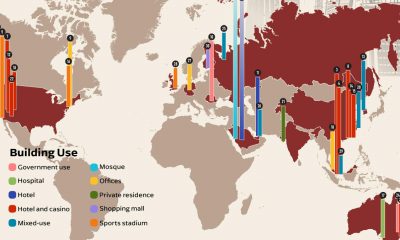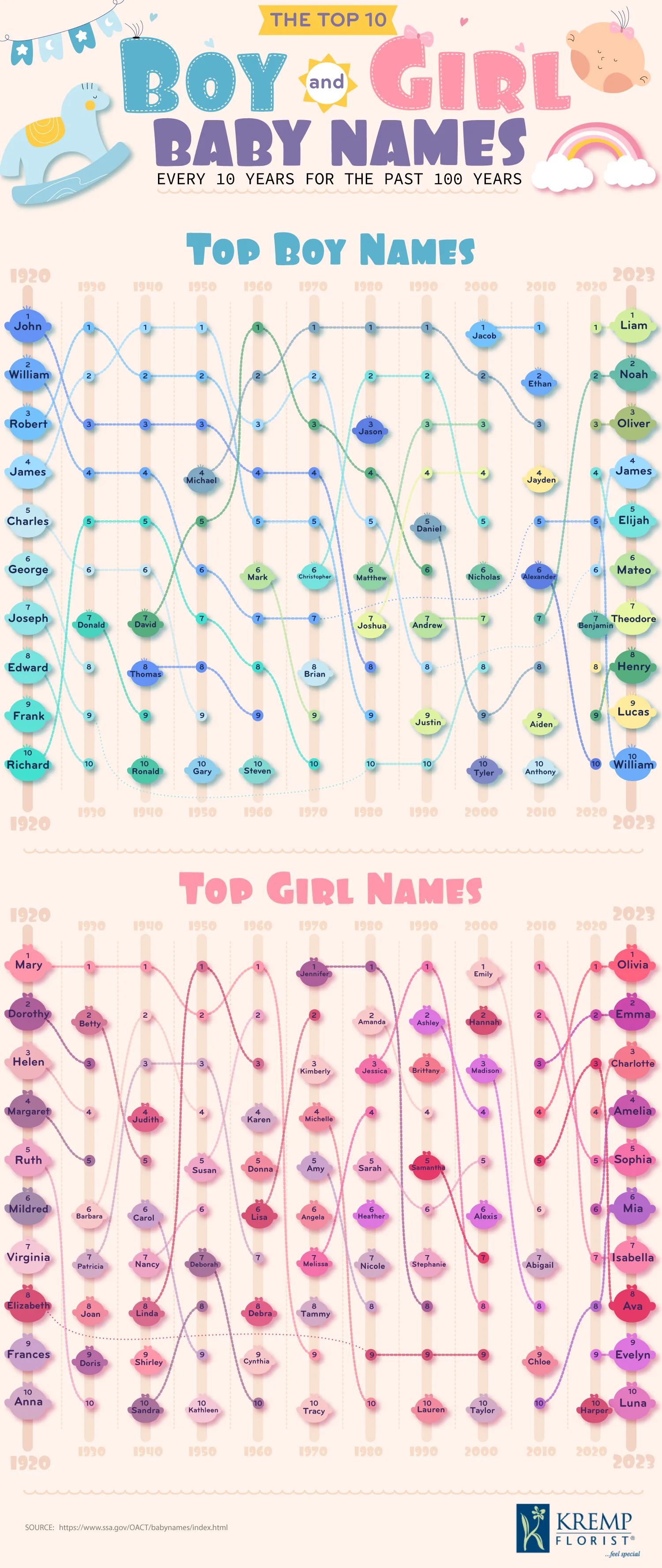Timelines
A History of the Oldest Flags in the World
The flag of Denmark has been in use since 1625, making it the oldest flag in the world that has been continuously used. Denmark’s national flag is called the Dannebrog. The white-on-red cross has been used as a symbol of Denmark allegedly since the 14th century, but it wasn’t until the 1600s that the current flag has been recognized as the country’s official flag.
Do you know the other flags that have been in continuous use the longest? The team at Wizard Pins examined flag designs from countries all around the world to visualize which ones have been continuously used by their respective countries the longest. Do you know which other countries have the oldest flags?
Click below to zoom
The countries with the oldest flags in continuous use include the following:
- Denmark (1625): Red background with a white Nordic cross
- Netherlands (1660): Horizontal bands of red, white, and blue
- Nepal (1743): The only irregularly-shaped flag consisting of two pennants with a red background (representing the color of the country’s national flower, the rhododendron) and a blue border (symbolizing the color of peace)
- United Kingdom (1801): The UK flag, also known as the Union Jack, is composed of the red cross of St. George, the saltire of St. Patrick, and the saltire of St. Andrew
- Chile (1817): The Chilean flag is composed of two equal horizontal bands of white and red with a blue square and five-pointed white star in the upper left corner
The flag of the United States, with all 50 stars and 13 states, was officially adopted in 1960.
Timelines
Timeline Charts the Development of Communications Technology
Humans are unique because of our sophisticated ability to communicate with one another. What we’re doing right now is a perfect example. Chartistry is showing you the timeline created by the Ooma team who used data from universities and libraries to create a visual representation of changing communications technology. They communicate it to us through pictures and words expressed through pixels, brought to us all by the connective power of the Internet, allowing you to learn something new in a matter of minutes. That alone is an impressive feat of communication! So, how did such a complex system of communication become commonplace? Well, this timeline shows us. A series of pivotal inventions and developments brought us from the first cave paintings to the 5g phone in your pocket.
Click below to zoom
The timeline starts in 100,000 BC and takes us all the way to present day, highlighting the most important communications technology with an image of each development, a description of why it made an impact, and the date it emerged. Along this long, winding path, we find inventions like the printing press. This creation allowed the written word to spread further and inspired more humans to learn to read. The telegram emerged centuries later inspiring the revolutionary first telephone in 1876.
After the telephone, radio waves opened all new avenues of communication by ushering in the age of radio broadcast and television, allowing humans to keep up with news all over the world. This concept was, of course, perfected by the Internet connecting humans on a global scale. This timeline highlights how deeply humans are driven to connect with each other.
Timelines
The Evolution of Baby Names: A Century of Trends
Even though approximately 10,000 babies are born each day, the act of naming holds significance. Some parents want a unique name for their child, while others want to follow tradition. Names serve as a window into the cultural zeitgeist, reflecting societal values, historical events, and pop culture influences of their time.
This chart from Kremp shows us that over the past century, we’ve witnessed a fascinating metamorphosis in naming preferences. In the 1920s, traditional monikers like John, William, and Mary dominated the charts, often inspired by religious figures or historical figures. Fast forward to 2023, and we see a shift towards more diverse options such as Liam, Noah, Olivia, and Emma.
Click below to zoom
This evolution could reflect broader societal changes. The decline of once-ubiquitous names like John and Mary might indicate a move away from strict religious influences while the rise of names like Mateo and Luna suggests an increasing embrace of multiculturalism.
Interestingly, some names have displayed remarkable staying power. James, for instance, has maintained its popularity across generations, briefly falling out of favor only to resurge in recent years.
The world of girl names has seen even more dramatic shifts. The top names of 2023 are notably different to those of a century ago. As we examine the trends Kremp showed us on their colorful and fun chart, remember that names show us what parents valued when gifting their child with their name. Whether drawing inspiration from beloved fictional characters, honoring family traditions, or simply choosing a name that resonates, naming continues to be a deeply personal and meaningful act.
Business Visualizations
Chart Highlights Recalls in the Automaker Industry
When it comes to automobile safety recalls, the manufacturers with the highest recall counts are most often those that have had recurring issues spanning multiple years. This chart created by Automotive Touchup highlights the auto manufacturers that have issued the most safety recalls in recent years.
Click below to zoom
As stated in data released by the National Highway Traffic Safety Administration, Ford Motor Company has had the highest number of recalls since 2010 with a count of 545 total. Many of these recalls had to do with Ford’s airbags, electrical systems, fuel systems, powertrains, and other components.
Not far behind Ford Motor Company is Forest River with a total of 527 recalls since 2010. Forest River is the largest manufacturer in the United States for recreational vehicles and trailers. The size and complexity of an RV means there are more areas throughout the vehicle where issues could arise. Therefore, Forest River’s vehicles are more susceptible to errors that could require safety recalls than traditional automobiles.
Chrysler, also known as Stellantis since a merger with brands like Dodge and Jeep in 2021, has had 514 recalls since 2010. As one of the largest automobile manufacturers in the United States, their number of recalls is nearly proportionate to their share of the U.S. automobile market. Daimler Trucks North America ranks fourth with 465 safety recalls, mostly due to the steering and electrical systems in their trucks.
Despite being the largest automaker in the United States and seeing increased sales in recent years, General Motors comes in only fifth place. Hopefully, they will continue this drop in the number of safety recalls of their vehicles in upcoming years.
-

 Business Visualizations4 weeks ago
Business Visualizations4 weeks agoEverything Owned by Apple
-

 Maps2 years ago
Maps2 years agoThe Population Density of Europe (and the World) in Two 3-D Maps
-

 Maps1 year ago
Maps1 year agoThe Most Popular Surnames in Countries Around the World
-

 Maps2 years ago
Maps2 years agoWhere Have The Most Shipwrecks Occurred?
-

 Business Visualizations2 years ago
Business Visualizations2 years agoThe Most Popular Board Games Based on Units Sold
-

 Maps2 years ago
Maps2 years agoThe World’s Most Expensive Buildings in One Chart
-

 Charts2 years ago
Charts2 years agoWhich Country Produces the Most Oil?
-

 Business Visualizations2 years ago
Business Visualizations2 years agoNew Maps Show the Most Popular Beer by State
















